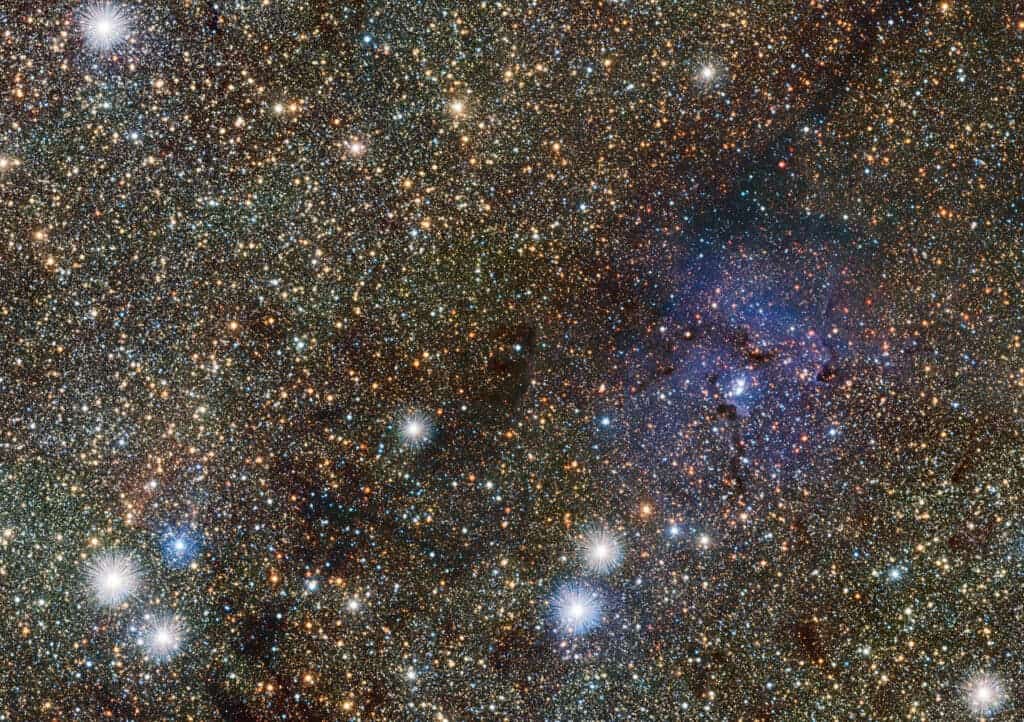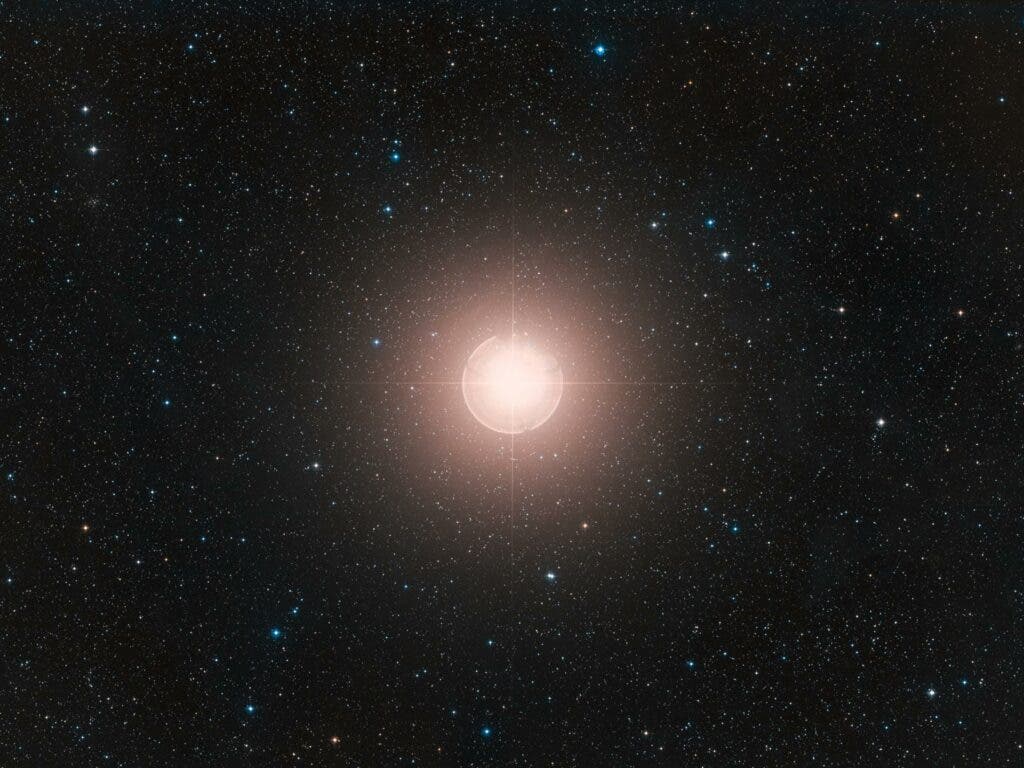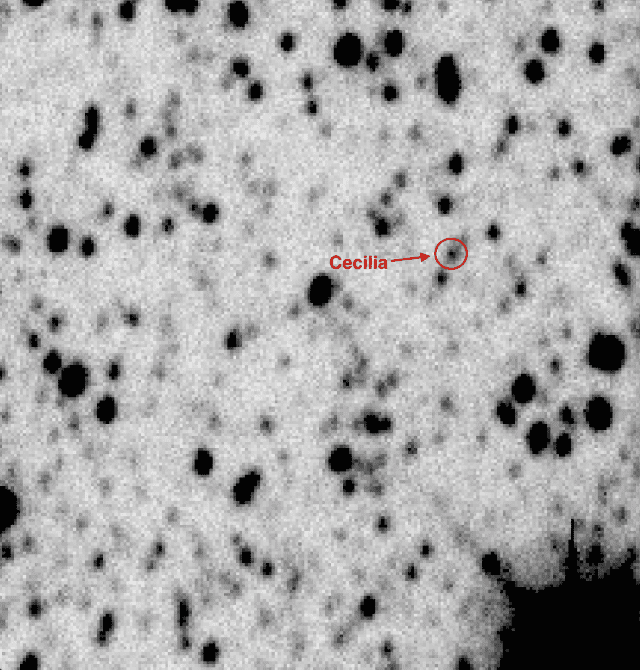It’s almost staggering to think that before 1925 humanity knew very little about the composition of the stars. In fact, we would develop the theories of quantum mechanics, special and general relativity before we knew what lay beneath the surface of the Sun.
The first scientist to develop an accurate theory of the composition of the stars was Cecilia Payne-Gaposchkin. Born Cecilia Helena Payne in a small English market town in Buckinghamshire in 1900, in doing so she would also develop the first accurate picture of the abundance of the elements hydrogen and helium throughout the Universe.
But, these remarkable discoveries were not met with the appreciation one would expect. Payne-Gaposchkin would be discouraged from publishing her findings by a male contemporary. The setback would be just one more obstacle for Cecilia to overcome.

Facing the prejudice and misogyny that typified society in general, and science and academia in particular, during the early 20th Century, Payne-Gaposchkin would show a resolve that led to her becoming the world’s foremost expert on variable stars and enable her to lay the groundwork for astrophysics.
Through sheer grit and determination, she would redefine our understanding of the composition of the stars and the Universe in general. Not bad for a scientist whose lectures weren’t even listed in her University’s course catalogue, who also had her wages by the same institute paid under ‘equipment costs.’
From Botany to Astronomy
The reward of the young scientist is the emotional thrill of being the first person in the history of the world to see something or to understand something. Nothing can compare with that experience.
Cecilia Payne-Gaposchkin
Things could have been very different for Cecilia Payne-Gaposchkin. Her interest in science first manifested as a fascination with the natural world and botany. A hint towards her future as an astronomer and astrophysicist shone through when Cecilia was just ten and she watched, transfixed, as a meteor traversed the night sky.
Payne’s interest in nature was encouraged by her mother, Emma Leonora Helena Payne, after her father Edward passed away when she was just four years old. The death of her father, who drowned in a canal under questionable circumstances, left young Cecilia devastated and her mother to raise the future astronomer and her two siblings alone.
Emma strongly encouraged the education of her three children, of which Cecilia was the eldest, introducing them to literature at an early age. Cecilia’s traits as a scientist would be further bolstered by her experience at her first school ran by Elizabeth Edwards which strongly encouraged the memorization of facts and figures.
Beyond this, Ms Edwards would actively teach her pupils, including the girls, geometry and algebra. Young Cecilia revelled in the solving of quadratic equations.
“My mother had told me of the Riviera-trapdoor spiders and mimosa and orchids, and I was dazzled by a flash of recognition. For the first time, I knew the leaping of the heart, the sudden enlightenment, that were to become my passion.”
At the age of twelve, Cecilia was forced to move schools when her family relocated from Wendover to London. Her new school, St Mary’s College, Paddington, could not have been less like Ms Edward’s. Like her female contemporaries, at the Church of England school with its strong emphasis on religion and ‘traditional values’ Cecilia would be offered little in the way of educational stimulation and even less encouragement to embark on a career in science.
In fact, it was here that a male teacher would confidently tell Payne-Gaposchkin she would never achieve a career in science. A prediction that may well go down in history as one of the worst ever made by an educator.

Fortunately, at the age of 17, Payne-Gaposchkin would be asked to transfer to St. Paul’s Girls School in London. Though the move initially troubled her, it is here where her teachers would allow Cecilia to study elements of physics such as mechanics, dynamics, electricity and magnetism, light, and thermodynamics.
At St. Pauls she was encouraged by her teachers to pursue science, enabling her to obtain a scholarship to Newnham College in 1919 where she would study the slightly odd but eclectic mix of botany, chemistry, and astronomy.
Attending the college, part of Cambridge University, Payne-Gaposchkin soon became bored with botany. Her tutors taught the subject stiffly and rigidly, relaying information she already knew, thus providing Cecilia with little stimulation. She recalled, in particular, an incident in which she discovered a group of desmids whilst studying algae under a microscope. Asking her tutor for help in identifying the organisms, he simply responded that it was not within the remit of her studies so she should just ignore it.
Her decision to switch to astronomy as her major was solidified when she attended a lecture given by Cambridge’s renowned astronomer Sir Arthur Eddington.
Eddington had found fame journeying to the island of Príncipe off the west coast of Africa to examine a solar eclipse that would provide verification for Einstein’s theory of general relativity. The lecture was on the same subject and for Payne, it ignited her desire to study nature beyond the surface of our planet.
Cecilia approached Eddington asking for a research project. He set her the problem of integrating the properties of a model star, starting from initial conditions at the centre and working outward.
“The problem haunted me day and night. I recall a vivid dream that I was at the center of Betelgeuse, and that, as seen from there, the solution was perfectly plain; but it did not seem so in the light of day.”

Disappointed at not being able to solve the problem she took her calculations to Eddington incomplete. She need not have worried. Eddington revealed to her with a jovial smile that he had not been able to solve the conumdrum either and had spent years trying!
Building the foundations of Astrophysics
Do not undertake a scientific career in quest of fame or money. There are easier and better ways to reach them. Undertake it only if nothing else will satisfy you; for nothing else is probably what you will receive. Your reward will be the widening of the horizon as you climb. And if you achieve that reward you will ask no other.
Cecilia Payne-Gaposchkin
Eddington was just taken with Payne-Gaposchkin as she was with astronomy, seeing great potential in the young woman. Unfortunately, transferring to the class of Ernest Rutherford, Cecilia discovered that not all of Eddington’s colleagues would be as supportive.
Rutherford, who would go onto perform experiments that would reveal the structure of the atom, was extremely cruel to Payne–the only woman in his class–encouraging the other, exclusively male, students to mock and taunt her, something they did with relish.
Payne-Gaposchkin weathered the storm. She had already experienced what it was like to exist in a male-dominated world and had already overcome too much to fold under mere mockery.
And the indignities would nor end there. Despite completing her coursework, women were forbidden to obtain degrees in the United Kingdom in 1923. Thus Payne-Gaposchkin would have no paperwork to verify her academic achievements. Her chances of obtaining a master’s degree or PhD in the UK were slim to none.
It was upon attending a meeting of the Royal Astronomical Society that Cecilia’s options improved markedly. Its new director Harlow Shipley regaled Payne-Gaposchkin with tales of the opportunities that would await her were she to relocate across the Atlantic to the United States.
Cecilia needed little further encouragement. She was awarded the Pickering Fellowship through Harvard College, taking the small financial aid offered by the only scholarship exclusively for women at the time and using it to move to America. Her association with Havard would continue for many years and prove to be extremely fruitful. Indeed, she would come to consider Boston her second home.
Whilst working under the auspices of Shapely at Harvard College Observatory she continued her studies, finalising what would go on to be her doctoral thesis–Stellar Atmospheres.

In the work, Payne-Gaposchkin would be the first person to suggest that hydrogen was the most abundant element in the universe and the primary constituent of stars. At that time scientists had believed that the Sun and other stars had a chemical composition similar to that of the Earth’s crust. American physicist Henry Norris Russell has pioneered the idea that if earth’s temperature was raised to that of the Sun’s it would have a spectral signature the same as our star.
Payne-Gaposchkin’s finding bucked this idea and arose from the fact she had a much better understanding of atomic spectra than her contemporaries. Unfortunately, American Russell strongly disagreed with her conclusion and persuaded her to leave it out of her thesis.
Payne later reflected on her regret with regards to being persuaded not to publish her findings. It was not a mistake that Payne would never be convinced to make again.
“I was to blame for not having pressed my point. I had given in to Authority when I believed I was right. That is another example of How Not To Do Research. I note it here as a warning to the young. If you are sure of your facts, you should defend your position.”
For what it is worth, Russell too would go on to regret his decision to pressure Cecilia. Russell published a 1929 paper that credited Cecilia as Payne’s earlier work and her discoveries.
It must be one of the most heinous injustices in the history of astronomy that Russell is still to this day often wrongly credited with Payne-Gaposchkin’s discovery.
Russian-American astronomer Otto Struve later recognised the genius of Payne-Gaposchkin’s thesis, describing it as “the most brilliant PhD thesis ever written in astronomy.”
To The Stars and Beyond
The reward of the old scientist is the sense of having seen a vague sketch grow into a masterly landscape.
Cecilia Payne-Gaposchkin
In 1934 on a visit to Germany for an astronomy meeting Cecilia met a young Russian astronomer, Sergei Gaposchkin. The astronomer was an exile from his country of birth due to his political convictions, and Cecilia found his struggles to be an echo of her own. She was determined to help Sergei find a secure and consistent place to practice science.
Indeed, obtaining Sergei a visa as a stateless person, Cecilia found him a research position at Harvard. To the surprise of their colleagues, the two were married in late 1934. Initial doubts that the marriage wouldn’t last were ill-founded.
Cecilia Payne-Gaposchkin and Sergei Gaposchkin would go on to have three children and remained married until her death in 1979. The two would also form a solid partnership in research, authoring several papers and books together. They even started their own farm–though it’s undeniable that Sergei enjoyed the life of a farmer much more than Cecilia did.
The discovery of the abundances of hydrogen and helium in the Universe and the composition of the stars would not be Payne-Gaposchkin’s only substantial contribution to astronomy and the burgeoning field of astrophysics.
Following the completion of her doctorate, Payne-Gaposchkin would begin to study high luminosity stars in order to understand the composition of the Milky Way. The period marked the beginning of Payne-Gaposchkin’s fascination with variable stars–stars which display periodic brightness fluctuations over radically different periods of time– and novae. This specialization led to the book Stars of High Luminosity, published in 1930.
Cecilia and Sergei undertook an audacious investigation of variable stars, during the ’30s and ’40s, they would make nearly 1.3 million observations of variable stars, with Payne-Gaposchkin’s mind for memorizing facts and figures making her almost a walking compendium of such objects. One of their papers published in 1938 would be the ‘go-to’ tome on variable stars for decades.
During the 1960s, Cecilia and Sergei would shift their attention to the small irregular galaxies situated by the Milky Way–the Magellanic Clouds–and the variable stars located within it. They would make another staggering contribution to astronomy during this study, cataloguing over 2 million visual estimates of these star’s magnitudes.
In 1956, Payne-Gaposchkin would finally be awarded the title of professor, making her the first woman in Harvard’s history to receive such an accolade. She would also be made the chair of a department at Harvard, also the first woman to be recognised in this way. Whilst no one could disagree that the accolade was insultingly well overdue, it was a small positive step in the right direction, finally opening the door for female professors across the US.
The Legacy of Cecilia Payne- Gaposchkin
“Payne-Gaposchkin’s most dramatic scientific contribution was the discovery that hydrogen is millions of times more abundant than any other element in the universe. Every high school student knows that Newton discovered gravity, that Darwin discovered evolution, even that Einstein discovered relativity. But when it comes to the composition of our universe, the textbooks simply say that the most prevalent element in the universe is hydrogen. And no one ever wonders how we know…”
Jeremy Knowles, dean of the Harvard University’s Faculty of Arts and Sciences (2002)
Despite waiting so long to be named a professor, Payne-Gadoschkin’s life would not be short on accolades. In 1934, the American Astronomical Society recognized her significant contribution to astronomy by awarding her Annie J. Cannon Prize.
In 1936 she would become a member of the American Philosophical Society, and the 1940s and 1950s marked the award of several honorary doctorates, that should not be viewed as merely consolation prizes for the actual doctorate that she had strived for and had been denied her.
Continuing her trailblazing progress for women in the sciences, in 1976 she would become the first woman to receive the Henry Russell Prize from the American Astronomical Society. The astronomer, who would publish over 150 papers and several books during her career, would receive a further honour in 1977 when the astroid 1974 CA–occupying the asteroid belt between Jupiter and Mars–was renamed 2039 Payne-Gaposchkin.

(Emer O Boyle, Meadhbh O’Connor)
After her semi-retirement in 1966, Payne-Gaposchkin would continue to lecture inspiring the next generation of astronomers. Her final academic paper was published in 1977, just months before her death in December of that year.
During the course of her life, Cecilia Payne- Gaposchkin would change our understanding of the Universe in a way that was no less profound than her colleagues in physics did. Without doubt, her name, therefore, should be listed alongside luminaries such as Copernicus, Newton, and Einstein.
Yet, because of her gender, her genius was barely recognised during her lifetime and her name is still sadly omitted from many textbooks and is nowhere near as prominent as the names of her male counterparts or as her achievements demand.
It is abundantly clear, by becoming the first person to known the true composition of the universe, her star shines just as bright if not brighter as any other scientist. And without her, we still may not know why.
This article was originally published in 2022 and was updated with new information.



